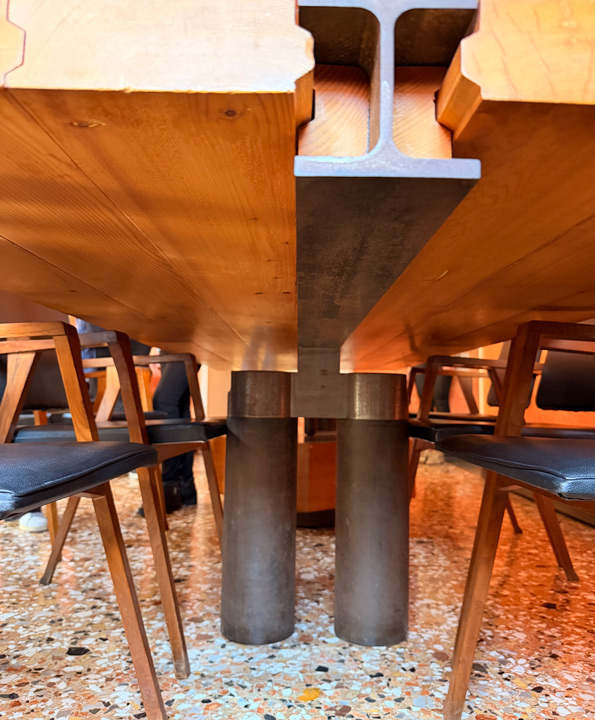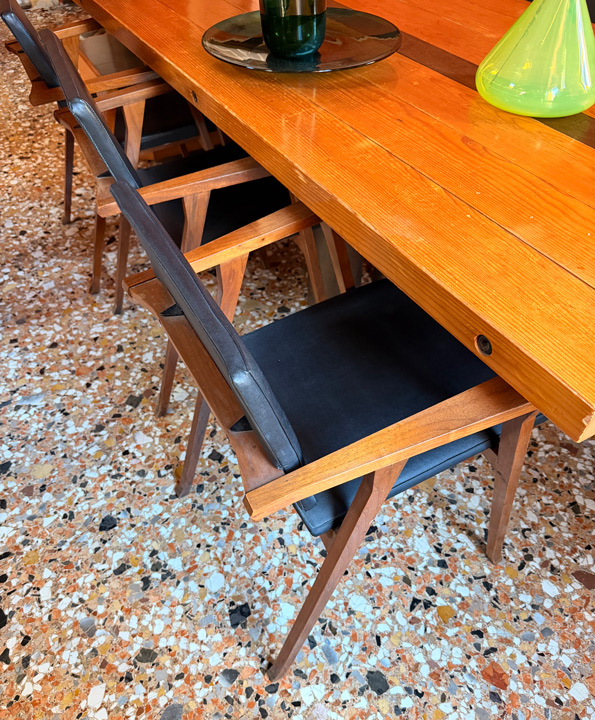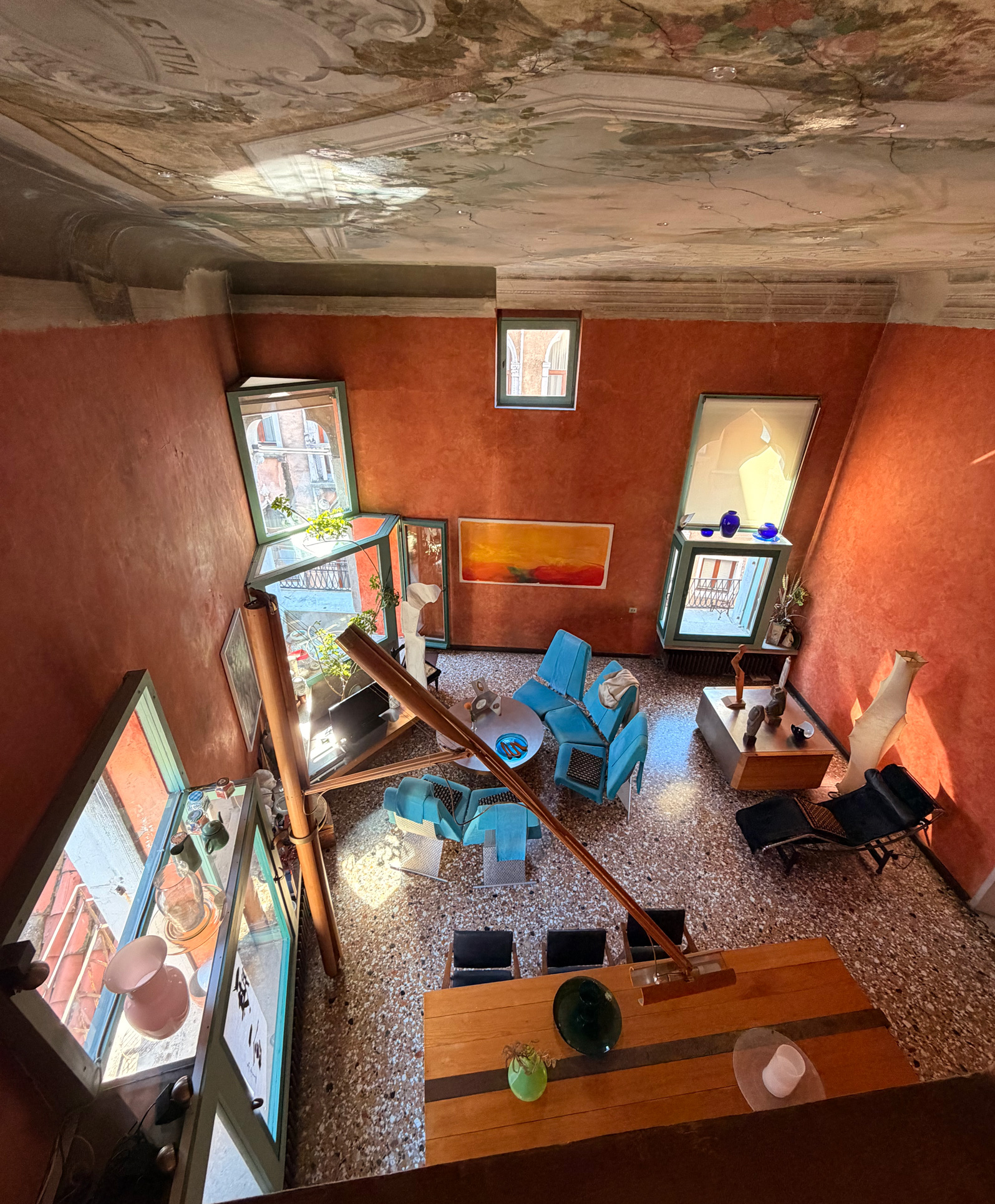Valeriano Pastor house visit in Venice
Abitazione in Palazzo Zacco — Venice (1965–67)
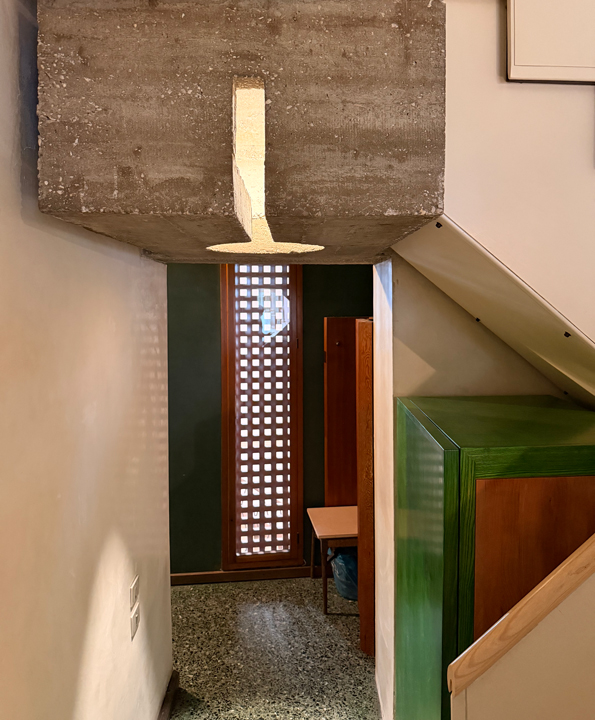
As part of a tour curated by True Design and Asset Interiors, we visited the third-floor west apartment of Palazzo Zacco overlooking the Rio di Santa Marina—home of architects Valeriano Pastor and Michelina Michelotto, refurbished in 1964–65. The dwelling is a lesson in Venetian verticality: slender “torrette” organize the tall entry, while stacked, extruded volumes interlock across three levels to reveal the plan as a spatial section.
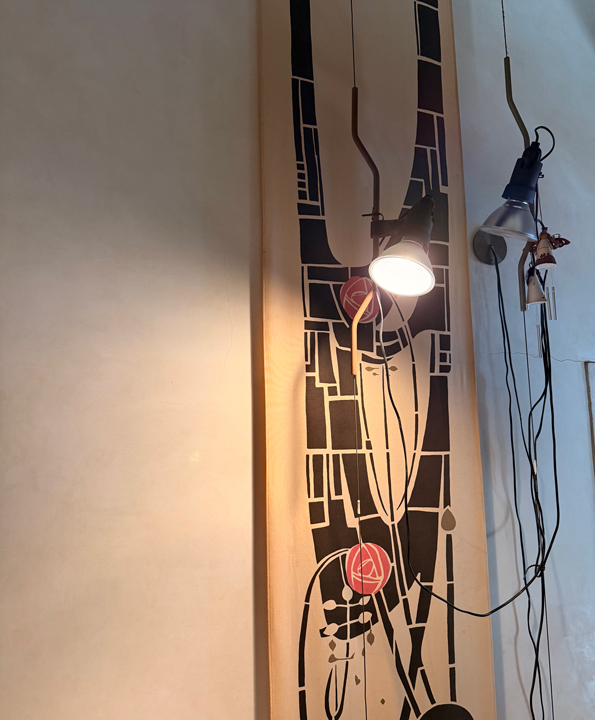
Pastor amplifies the city’s material palette indoors—cocciopesto orange walls, canal green window frames, and the luminous white of Istrian stone—so that Venice is literally drawn into the house. Windows project into rooms as inhabited frames, creating liminal thresholds between inside and out; the orange finish continues across these jambs, pulling the city’s light and reflections into the interior. 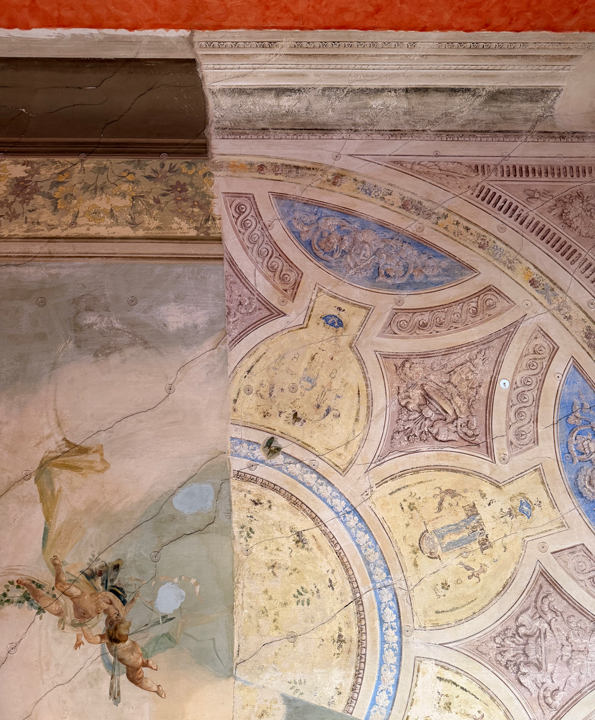
Furniture and fittings are deliberately non-invasive yet astonishingly precise: a suspended rotating service cart nests under the long dining table; a beautifully engineered timber lamp adjusts on cables; storage and work elements are modular, mobile, and often rotating.Circular “lunette” motifs recur—from a cylindrical kitchen pantry to a round shower—and even pierce ceilings to deliver daylight to the upper studio. As Barbara Pastor recalls, “everything in a space had to be modifiable, movable, and re-thinkable,” an ethos legible in the swiveling libraries, rolling units, and internal balconies that overlook the domestic microcosm below. Valeriano Pastor (1927–2023) was a Venetian architect and educator whose quiet rigor shaped the city’s late-20th-century architectural culture: a graduate and long-time professor at IUAV, he served as Rector from 1979 to 1982, mentoring generations around ideas of measured insertion and adaptable domestic space.
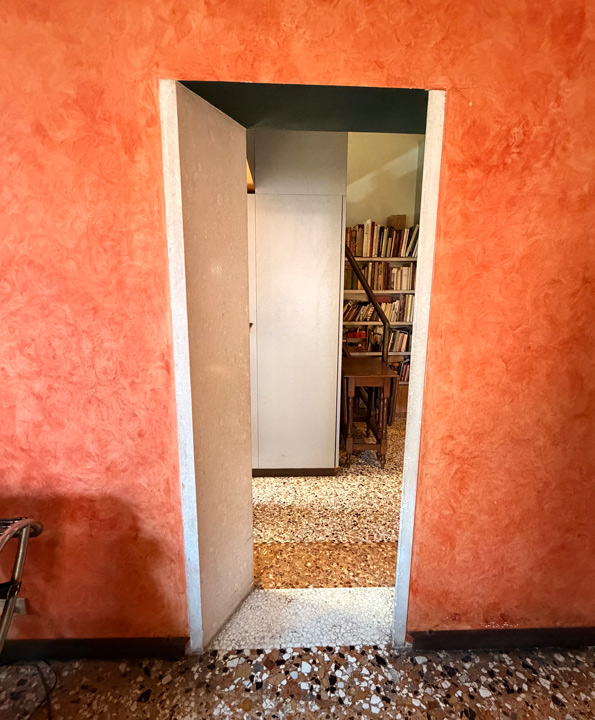
He collaborated within the Venetian milieu and continued key works at the Fondazione Querini Stampalia, consolidating the palace and re-organizing museum and library routes in dialogue with Scarpa’s legacy. Recognized with the Triennale di Milano Gold Medal for lifetime achievement in 2018, he remained emblematic of the “Venetian school”—craft-driven, context-aware, and resistant to spectacle. Educated at IUAV and both a student and collaborator of Carlo Scarpa, Valeriano Pastor absorbed Scarpa’s ethic of measured insertion and craft-driven detail, later extending that lineage in his own teaching and practice. Scholars have traced Pastor’s graphic and spatial research—populating drawings with coded bodies and designing modifiable interiors—to lessons learned in Scarpa’s orbit. His work at the Fondazione Querini Stampalia in the 1980s–90s explicitly dialogues with Scarpa’s earlier interventions, a continuity also recognized by the institution itself when entrusting Pastor with reimagining routes and services for the palace.
A generous thank-you to True Design and Asset Interiors for opening the door to this quietly radical Venetian interior.


